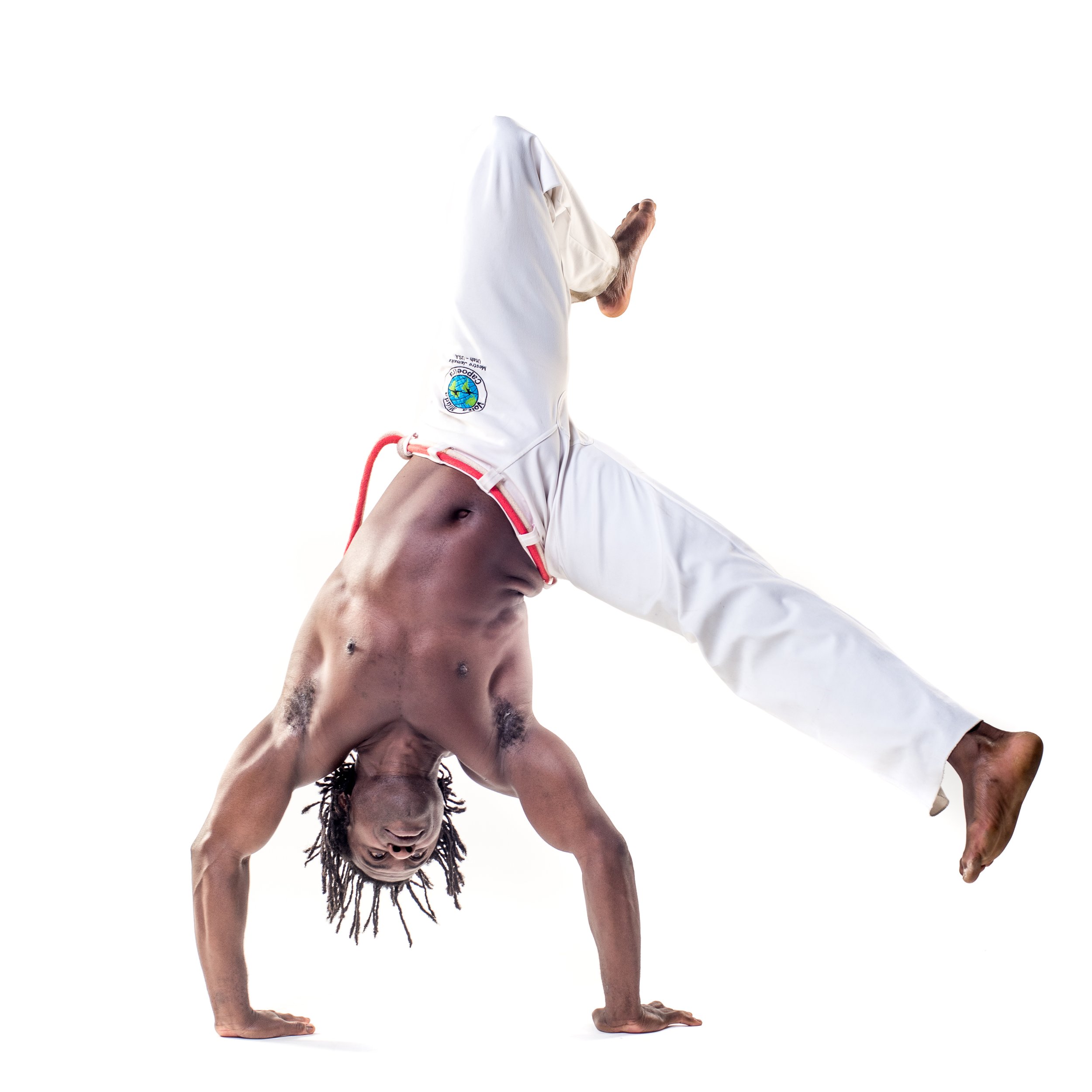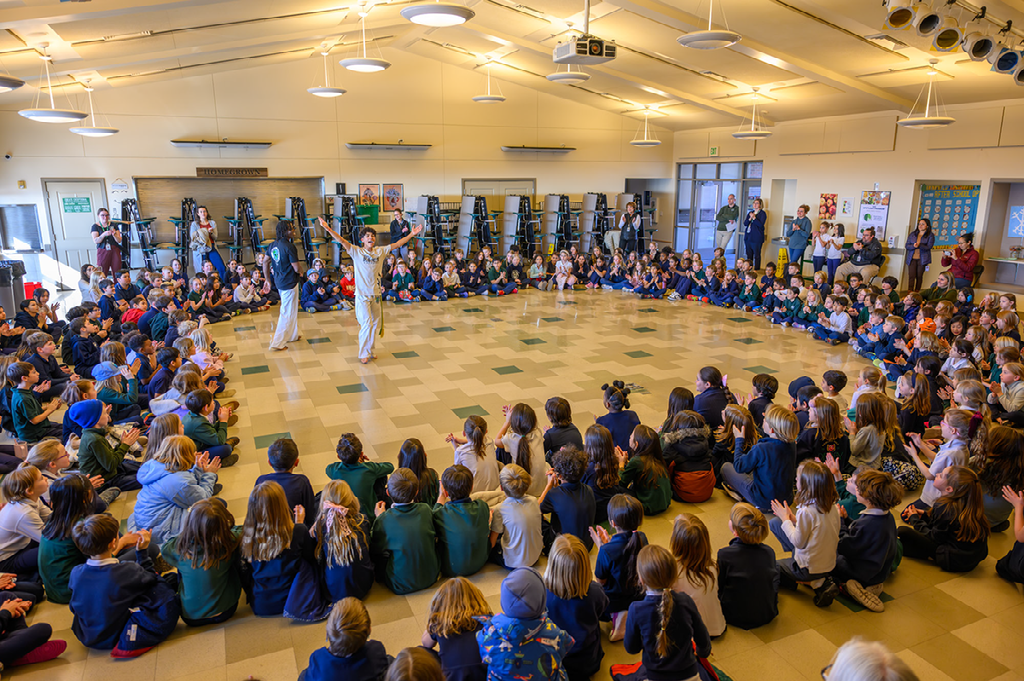Mestre Jamaika and members of Salt Lake Capoeira were invited to Brigham Young University to share the art of capoeira with students and faculty. The visit was hosted by Jordan B. Jones, Assistant Professor of Portuguese & Brazilian Literature, and co-sponsored by the Phi Lambda Beta Portuguese Honor Society, along with the Departments of Spanish & Portuguese, Latin American Studies, and Dance.
The day began with a unique capoeira class taught entirely in Portuguese for language students. Mestre Jamaika led participants through movement, rhythm, and song while offering cultural insights and vocabulary in context—bringing language learning to life through embodied experience.
Later, an open capoeira class in English welcomed dancers, students, and community members to join in. It was filled with energy, music, and connection as Mestre Jamaika and Salt Lake Capoeira students demonstrated how capoeira blends martial arts, dance, music, and community.
Thank you to Professor Jones and BYU’s sponsoring departments for creating this space to share Afro-Brazilian culture and the living tradition of capoeira.
Thank you to Phillippe Castro @pcastrro for the photos.










































































































